The first movement of Beethoven’s Symphony No. 5 is a great example of the classic structure of sonata form. Let’s begin by enjoying the whole thing before delving deeply into how this piece embodies that form so well.
THE EXPOSITION
The exposition, as you now know, is the first section of a sonata form movement and “exposes” the main musical themes, beginning in the key that gives the music its title. In this case, the music begins in C Minor and the primary theme is heard.
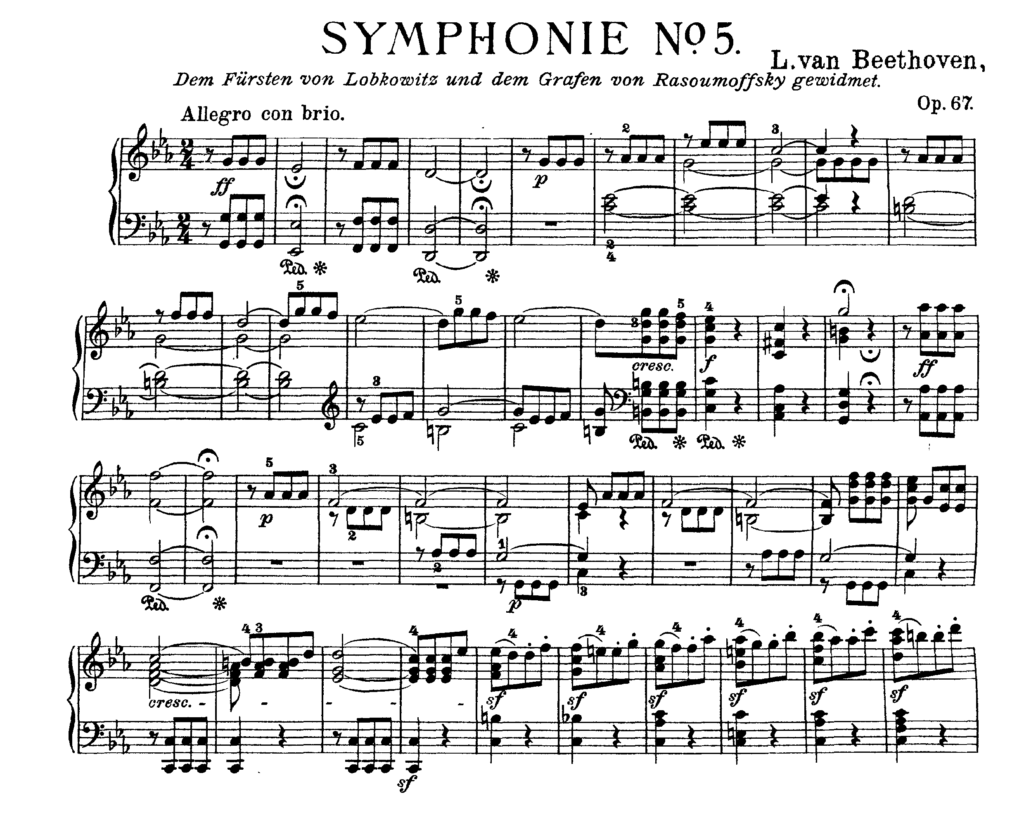
This primary theme leads to a transition. Transitional music in a sonata movement tends to be less “shapely” than a melodic theme, relying more on scales and arpeggia, fragments and gestures. Transitions also include the key change. In this case, the music moves from the home key to a strange chord (remember it… this will be important again in about 5 minutes): Adim7/C.
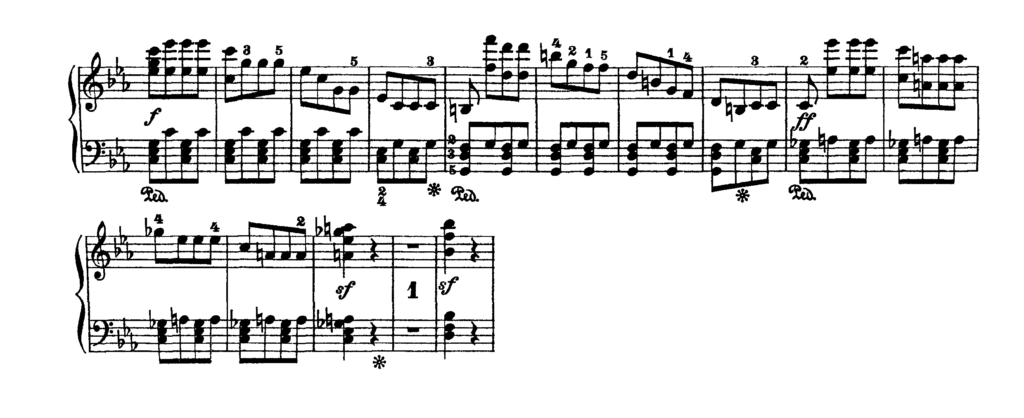
So, what is the function of Adim7/C? In C minor, it sounds like a transformation of our tonic chord since it has a tonic bass note (a common-tone dim7 chord?). It could function as a secondary leading-tone chord, and the most likely candidate would be vii°65/V, which would be spelled as F#dim7/C. This is an enharmonic variant of that — the same sound, but spelled differently.
Since we have the notation, we know that it’s an Adim7/C, but a listener with no score isn’t privy to that information. The notation shows that the Adim7/C indeed leads us to the correct place: it is vii°7/V in the key of E-flat Major. This relative major key — our secondary key — is the common modulation for the exposition of a minor-mode sonata form.
The secondary theme that follows is lyrical in nature, which is also common in sonata form movements.
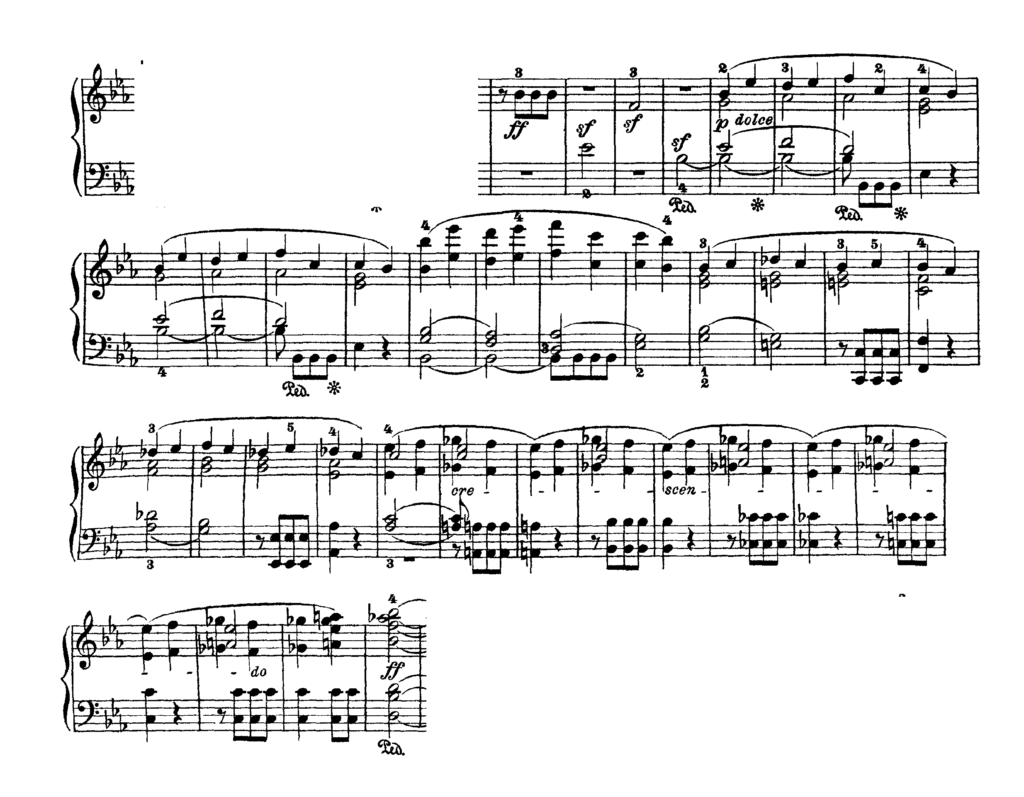
It moves quickly to the closing theme (sometimes at this point there may be a “closing group,” or series of themes).
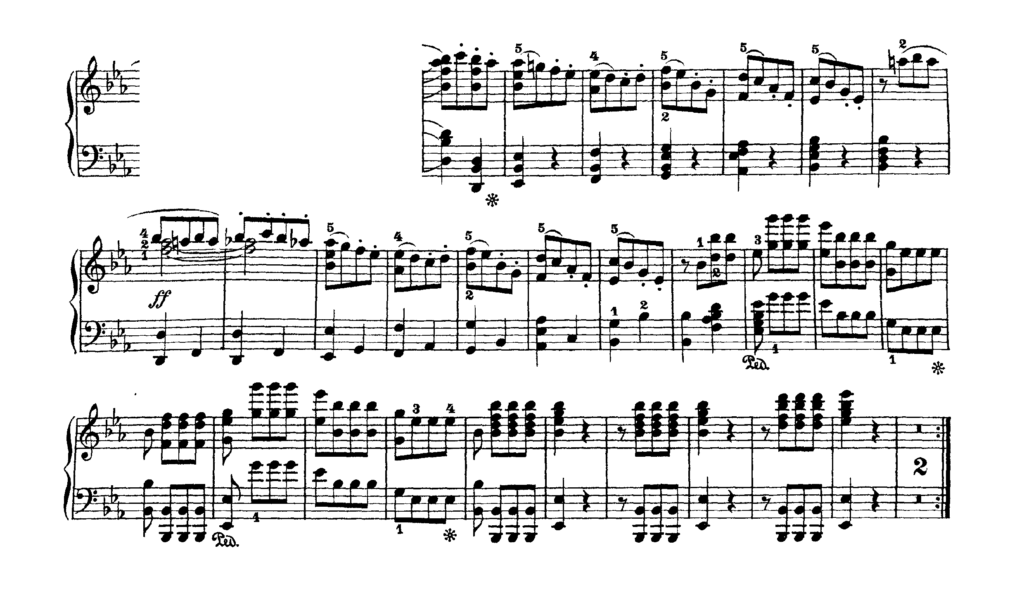
THE EXPOSITION REPEATED
At this point, the exposition is repeated. Sometimes in a sonata form there is a tonal transition added at this point to set up the return of the original key. This piece has a special feature, though; since the first notes of its famous motive are common to both C Minor and E-flat chords, the transition is already smooth.
But that’s not how it progresses at the end of the repeat of the exposition.

THE DEVELOPMENT SECTION
Beethoven moves to the development section by shifting these same notes up a third, and using them as part of a C7 chord, beginning the development in yet a third key: F Minor. From a thematic standpoint, the development begins entirely based around the primary theme.
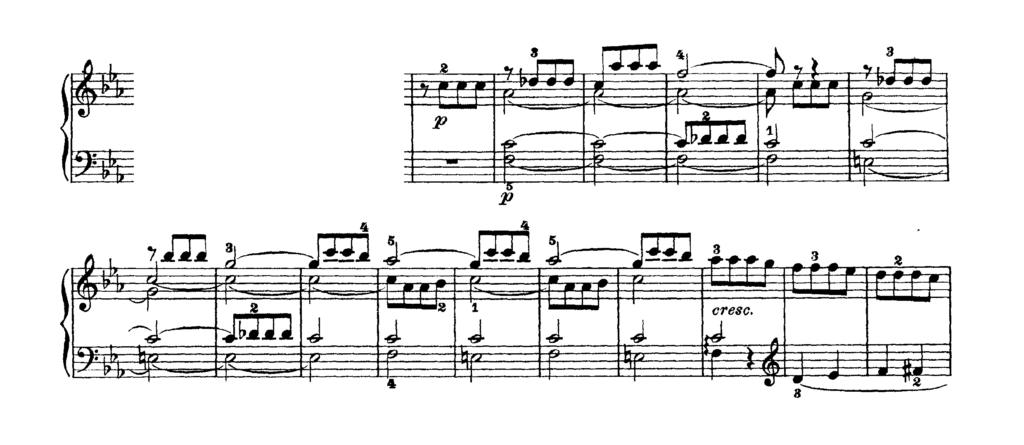
And then moves to C Minor.

And then to G Minor.

At this point, a grand crescendo begins, continuing in the key of G Minor…

…eventually culminating with the return of the secondary theme, now in a more forceful guise (and in the minor mode). This theme dominates the next section, progressing in a reverse-circle-of-fifths to pass through several keys: G Minor, C Minor and F Minor, then side-stepping via an enharmonic shift to F-sharp Minor…

…settling on a DM triad, moving through an outburst on that chord, and finally settling quietly on a Bdim7 chord, which functions now as vii°7 in the original key of C Minor.

THE RECAPITULATION
The recapitulation brings back the primary theme, almost exactly the same as it was before (this piece has an intriguing digression – a small oboe “cadenza” has been inserted where the was none before).
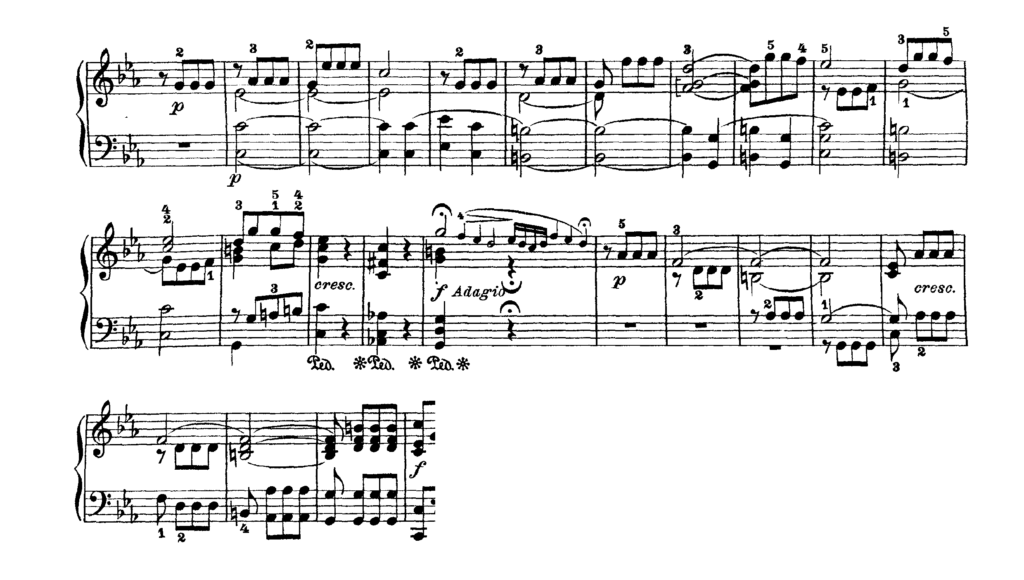
The transition in the recapitulation is always a pivotal point in the sonata form. Remember: this was the point in the exposition when a modulation occurred, bringing the music to its secondary key. But in the recapitulation, both themes are in the same key.
Because of this, many sonata form movements have an interesting “feint” at this point, using harmonies that sound like they are modulating, but that in fact return to the primary key.
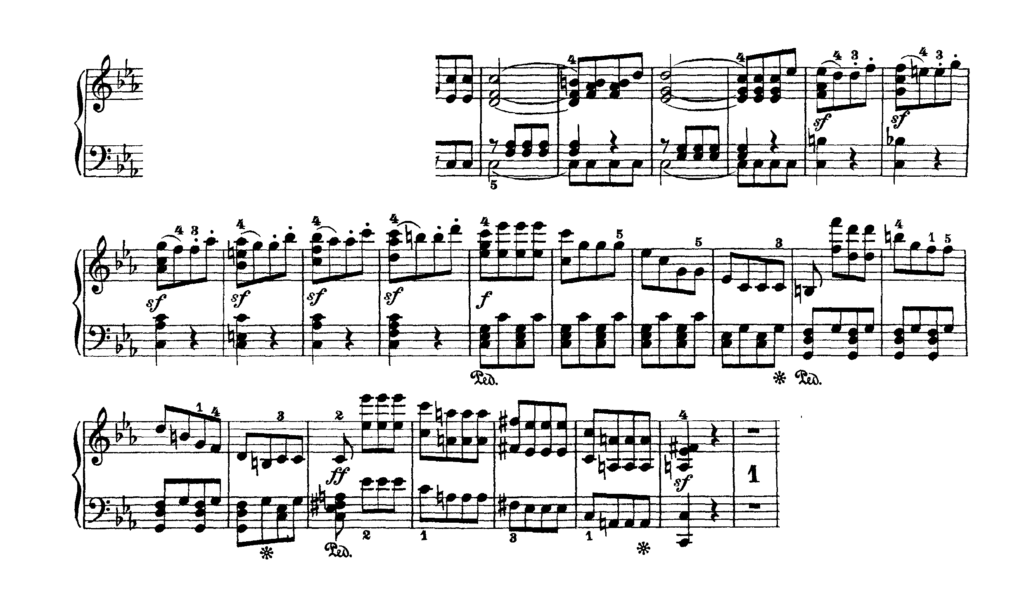
And, as you see above, this music is just like what we had before (the piano transcription has some textural differences, but the melody and harmony are identical).
But examine that last chord… what originally was Adim7/C is now spelled as F#dim/C. These two chords are enharmonically the same; remember that this is chord in the exposition had a dual “meaning” – it could have been used as a leading-tone chord to G (V in the primary key), but instead was used as the leading-tone chord to Bb (V in the secondary key).

As you see, here in the recapitulation, the dim7 chord progresses to G/B, which is the dominant chord in the primary key. The music is staying in C Minor….
…or so we expected! Beethoven decided at this point to not only maintain the primary key’s tonic, but also the secondary theme’s mode. The music actually progresses in C Major.
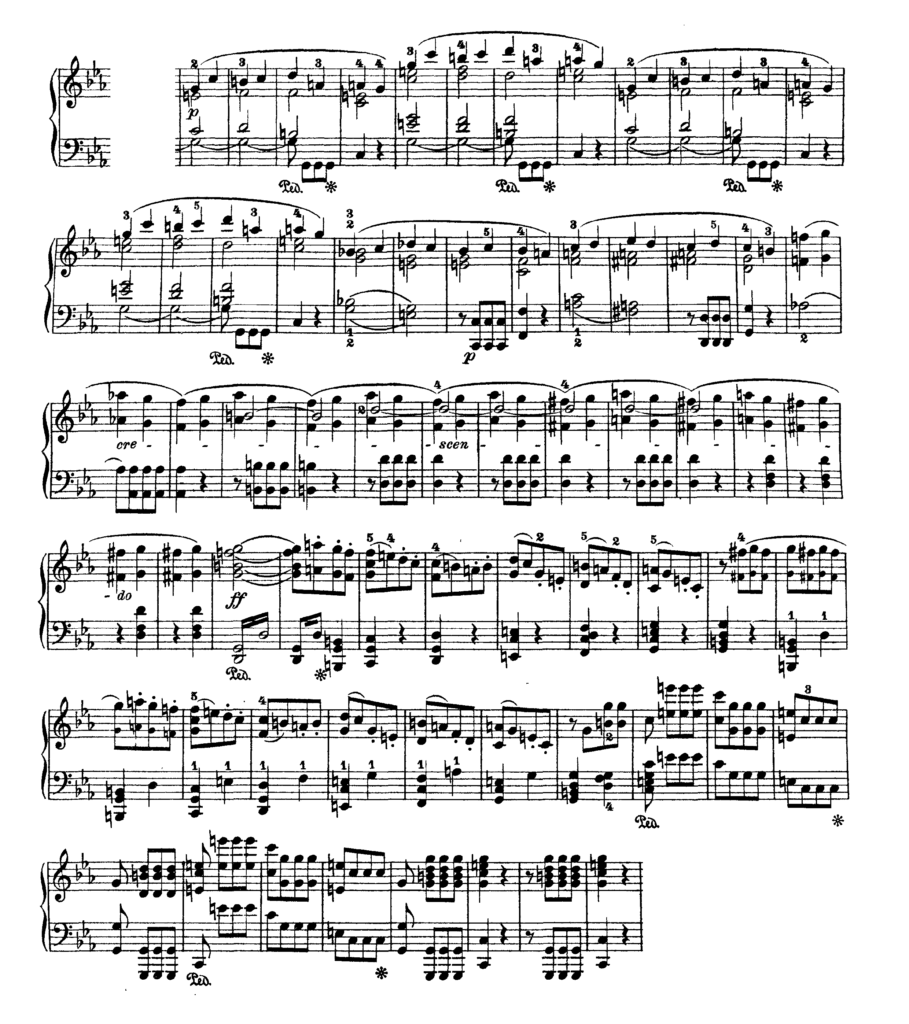
And this brings the symphony to (what sounds like) a conclusion.
But the music actually continues for quite a bit more, back in the key of C Minor, leading to an emphatic conclusion.
